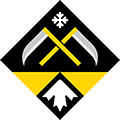Media
Media inquiries - Athlete interviews - Information on our programs and events
Disciplines
THE SNOWBOARD DISCIPLINES
Alpine - Parallel Giant Slalom
The most notable change in 2002 was that the Giant Slalom discipline contested in 1998 had been changed to a dual event - the Parallel Giant Slalom. PGS features head-to-head competition. All competitors race the clock in the qualification round and the fastest 16 racers advance to the elimination round. These 16 competitors battle it out on two, side-by-side courses. After run one, the riders switch courses and in run two, the gate of the person that won the first race opens first, equivalent to the amount of time they led by. This ensures that the second run of each round really is a ‘first past the post’ race. The winner after the second race advances to repeat the process while the other heads to the stands to watch the outcome.
Alpine - Parallel Slalom
Similar to Parallel Giant Slalom but actual speeds are slightly less. The gates are more plentiful and closer together, causing the riders to have to be quicker from edge to edge.
Snowboardcross
This Olympic discipline sees competitors race through a course that features banked turns, terrain changes and jumps. It truly tests a rider’s all-around skills – and nerve. Each rider races the course solo at first, and the fastest times determine the start order for the knock-out rounds. The elimination rounds then see FOUR riders in the start gate at the same time and racing together on the same course, with the fastest two advancing on to each next round. A four-rider final determines the medal positions.
Para-Snowboardcross
Athletes compete in a time trial version of the Snowboardcross (SBX) Event. This format consists of each rider performing two or three timed runs, with only one rider on the course at a time. The course set up is similar to able-bodied snowboardcross events, with modifications to terrain features. The format combines both race and freestyle elements, while challenging the athletes regardless of their disability. The International Paralympic Committee (IPC) is the governing body for Para-Snowboard. The IPC is responsible for creating the rules and regulations for a safe and fair playing field for the athletes.
Freestyle - Halfpipe
The Halfpipe competition is a judged event. Judges each give the rider’s completed run an overall impression score. The runs are evaluated using several criteria including the sequence of tricks the rider performs, the amount of risk in the run and how the rider uses the pipe. The scores are compared, with a Head Judge overseeing the process. After qualifying for the finals, the slate is wiped clean and qualified competitors take two more runs. The higher of the two final run scores are used to rank the riders and determine a winner.
The size of the Halfpipe and the expertise of the riders in it have grown proportionately. Within eight years, wall heights have practically doubled, increasing to 22 feet. The pitch (steepness) has mellowed to 16.5 degrees from 18 and the transitions between the vertical part of the walls and the flat in the middle have become smoother and bigger. The changes have provided a safer venue for the riders, while at the same time, supporting the development of the sport.
Freestyle - Big Air
As with Halfpipe, Big Air is a judged event. Individual riders approach a single jump (also called a ‘Kicker’), perform tricks in the air, and land on a slope of around 30 degrees. Judges award points based on overall impression which will include style, degree of risk and of course a clean landing! For photo opportunities and a big crowd atmosphere, the Big Air event is without peer. The ‘Wow factor’ is huge, but it is far more difficult for the spectators to be able to tell who will win than it is with the race-based disciplines.
Freestyle - Slopestyle
This newest discipline to the world cup circuit has gained huge popularity in the past few years. Riders compete individually on a course containing a variety of large jumps, terrain features and rails. They are expected to flow smoothly from start to finish without stopping and the judges look for similar criteria as they do in the halfpipe.












